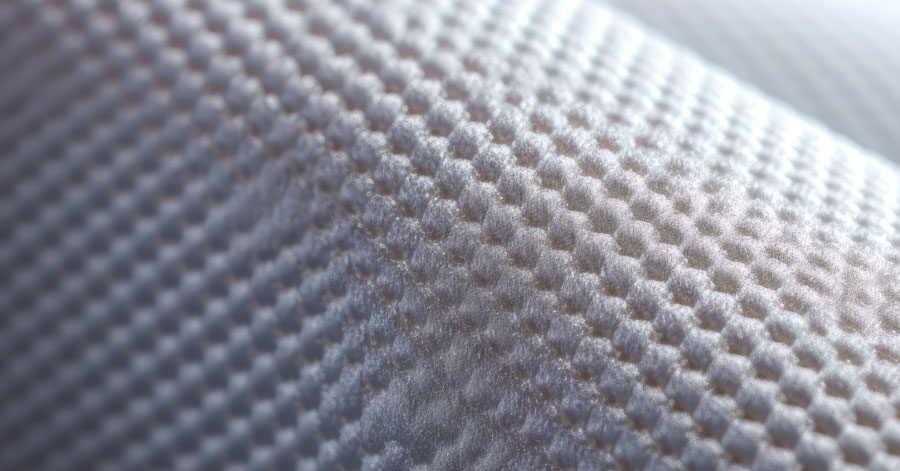3 min read
Demand Found Sadly Lacking as Chinese Synthetic Fibers Emerge from Lock-Down
 Javier Rivera
:
May 12, 2020 12:00:00 AM
Javier Rivera
:
May 12, 2020 12:00:00 AM

The Covid-19 pandemic and the resulting disruption to economies around the world has had a major impact on global synthetic fibers demand – with a hiatus in trade, not only for raw fibres but also downstream textiles and end-user products. Small and medium-sized fabric mills in particular find themselves under severe financial pressure.
As China returns to almost normal plant operations, the issue of demand – or the lack of it – is beginning to weigh heavily. Initial optimism, and the promise of good margins afforded by low feedstock costs, have disappeared as inventories build through the chain.
We assess the current situation in Chinese synthetic fiber markets:
Polyester Fiber
Demand in the polyester fiber industry has been recovering only slowly through March, April, and May, due to reduced operating rates at downstream plants and weak consumption of end-user products in overseas markets. While everyone was looking forward to a market improvement as the outbreak in China was brought under control, the spread of the infection across the world, and the resulting restrictions on economic activity, have hit export orders in the textile and apparel sectors, adding to weakening polyester fiber demand. There has been a sharp increase in canceled and delayed orders following the implementation of lockdown orders globally.
While the export market has been difficult the domestic market also shows a slowing trend. According to the National Bureau of Statistics of China, from January to April, retail sales of garments, footwear, hats, and knitwear were reported at Rmb305.7 billion - down 29% in comparison with the same period of 2019.
Chinese market participants are eager to see any kind of improvement in overseas demand due to the further easing of lock-down restrictions in the EU and elsewhere.
Although some new polyester filament yarn capacities are scheduled to start up in China during 2020, these are now expected to be delayed.
Polyamide Fiber
Exports of polyamide fiber (both PA6 and PA66) alone account for around 10% of the total production in China. This share is much larger if exports of textiles and apparel are taken into account.
According to official sources, the total value of textile product exports from January to April 2020 reached over $37.3 billion - an increase of 2.9% from last year. Mask exports are included in the textile total, which may help explain the increase.
The price of polyamide stretch yarn, which is used in mask ear tapes, increased significantly in the first half of April. But this was a short-term boost to business as the consumption of mask ear tapes is not big enough to support the whole polyamide fiber market.
The total value of apparel product exports from January to April was over $29.3 billion a year-on-year decrease of 22.2%. This market has been badly affected by decreased export orders, caused by the lock-down in normally importing countries.
June to August is usually the low season for the apparel market. And it is feared that some producers may have to shut down the plants over the coming months if demand gets worse.
However, with the news that schools will re-open in June, the hope is that life will return to normal and that domestic demand, at least, will recover gradually in Q3 and get back to normal in Q4.
The polyamide fiber market in Taiwan has also been severely influenced by the global coronavirus outbreak. Export volumes decreased as a result of the lockdown in some countries, especially in India - which has been extended to 31 May. The average plant operating rate at major polyamide fiber producers is very low, and it may take time for demand to improve.
Acrylic Fiber
When acrylic fiber producers and consumers in China shut down their plants in January 2020 ahead of the upcoming Spring Festival, they had little idea of what lay ahead.
Key acrylic fiber producers maintained smooth plant operations while others ceased production in February and did not restart until March, when the pandemic was beginning to come under control and employees could return to work.
However, domestic demand did not recover to earlier levels as people avoided expenditure on optional items. Influenced by the outbreak of the coronavirus pandemic worldwide, overseas inquiries were reported to disappear. Imports of acrylic fiber declined sharply in Q1 2020, a decrease of 24% year-on-year. Domestic acrylic fiber stocks piled up and forced domestic producers to reduce output.
Acrylic fiber prices moved steadily downwards in the first four months of 2020 - in line with decreasing acrylonitrile costs. However, in May, acrylonitrile markets firmed as producers, themselves suffering negative profitability, cut acrylonitrile outputs. But demand was insufficient for this to bring about any rebound in acrylic fiber prices and market participants remain pessimistic about prospects for acrylic fiber markets in what remains of the first half of this year.





